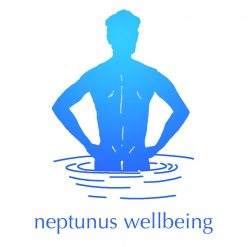To me, a tear is one of the greatest gifts I receive from my clients. The tear shows me that there is confidence to show something of yourself. Yet many people are shocked or try to suppress tears for as long as possible. I wrote this piece to take away the hesitation and as an invitation to let tears flow and not hold back.
Why do tears often come to my eyes during the treatment?
Many people dread a more intimate massage, in-depth treatment or body work because they fear the tears that may come. A tidal wave of tears can be confusing, because you enjoy the massage and yet sorrow suddenly emerges. "I'm not a crybaby," you say to yourself. But by doing so you are depriving yourself and perhaps you let yourself be guided too much by (old) social views.
Is crying during a session healthy?
New insights show that crying is very healthy. And that a tear indicates the release of old tensions in your body and mind. The limbic system in our brain controls our emotions, responses to stimuli, behavior and memories. "When the nerve endings in our tissues are stimulated, it is not uncommon for this to release stuck emotional memories, even when you may not feel a sense of trauma or sadness," said Amy Olthoff, director of Spa Nalai in New York.
Is it normal for me to cry every time I get a massage?
You can rest assured that you will not be the first person to cry on the table, nor will you be the last. This is a very normal reaction, especially if you are occasionally stressed, tense or have been through difficult moments. The relaxation space in your body and mind ensures that there is a release of recorded feelings, whether this is sadness, anger or excitement. That pent-up emotion often lets go in the form of tears.
Being vulnerable is quite scary, especially in an unfamiliar environment and with a therapist you may not have met before. But although it can be quite intense to get to your feelings, it can be a very healing experience, after which you feel a lot lighter.
What can help me with this?
Whether you are coming for a massage, body work, or another treatment, it is a good idea to share a bit about how you are, your emotional state, and your concerns before starting the treatment. This ensures that as a practitioner I can be with you with more empathy and full attention and that I have the right attitude to help you the best. This can be in the form of a non-judgmental touch and attitude during your vulnerable moments. Sometimes you feel a bit confused after a treatment. This is because your thoughts and feelings are rearranged, which ultimately leads to greater clarity of mind.
What do you do when someone has tears?
Many therapists offer a tissue and then leave the client alone for a while. I myself stay with you and I keep eye contact. In this way I can empathize with what you feel, because “shared sorrow is half sorrow”.
Words are not always needed, they often come later. Instead of asking questions, I often look around and in the tears to see what small or large patterns the tears want to reveal. Because not all tears are the same. The human body produces three types: basal tears, which form an oily layer over the eyeball to keep it from drying out; reflexes, which appear when an eye is irritated by, for example, dust particles or the juice of a sliced onion; and psychogenic, which are rejected for emotional reasons. Because emotional tears have a higher protein content, they are thicker and roll down your cheek more slowly.
Why do we often have to cry and laugh at the same time, but can't we cry and sing at the same time?
In the recently translated “The Book of Tears” by Heather Christle attention is paid to this. The book is a must, because even if no unambiguous answers are given, plenty of space is given to the beauty of tears. Heather also explains that it is nearly impossible to sing and cry at the same time. "The throat muscles cannot simultaneously obey the command to form notes and the command to hold themselves open to maximize oxygen uptake, a command that unconsciously triggers crying." That's why Heather Chrisle comes to the conclusion that the opposite of crying isn't laughter, it's singing. "Both extremes are valuable moments, when you need to sing and the moments when your voice breaks and a tear appears."
Sometimes there are no words for it
One of Heather Chrisle's valuable insights is that crying marks a limit: Crying occurs when people have reached the limit of what can be said in words and what they can control themselves. This does not mean that their words up to that point are necessarily good or true or can be trusted. But it does mean that a “breaking point” has been reached. It means it is time to pay attention to the systems and feelings the tears refer to.
